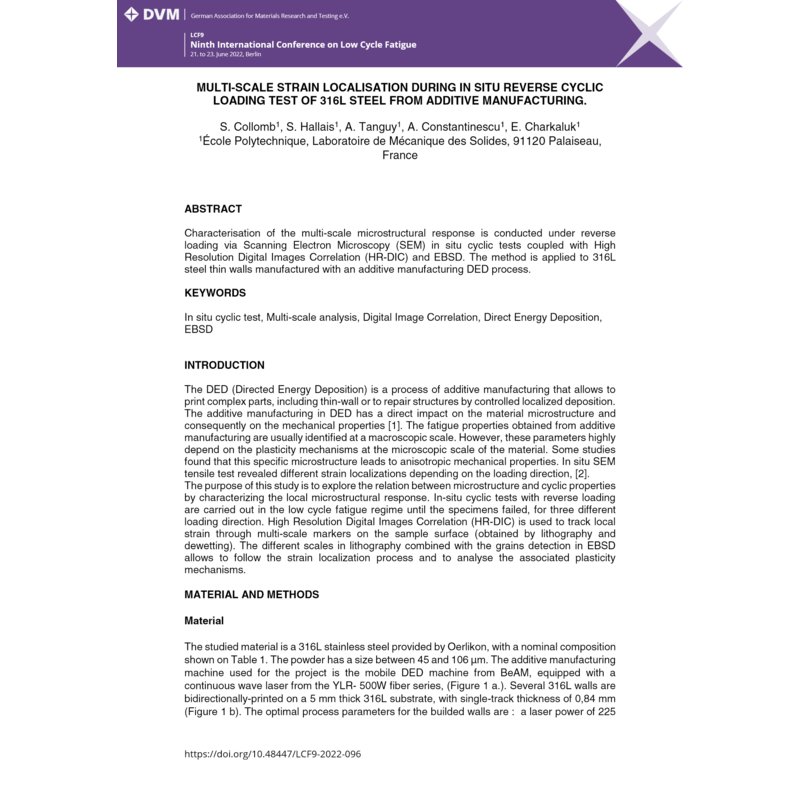- Nur online erhältlich



The DED (Directed Energy Deposition) is a process of additive manufacturing that allows to print complex parts, especially thin-wall or to repair structures by controlled localized deposition. The additive manufacturing in DED have a direct impact on the microstructure of the material and consequently on the mechanical properties [1]. The fatigue properties obtained from additive manufacturing are usually identified at a macroscopic scale. However, these parameters highly depend on the plasticity mechanisms at the microscopic scale of the material. The purpose of this study is to explore the relation between microstructure and cyclic properties by characterizing the local microstructural response via SEM in situ tests coupled with HR-DIC and EBSD.
Because of the…

Datenschutzbedingungen (bearbeiten im Modul "Kundenvorteile")

Lieferbedingungen (bearbeiten im Modul "Kundenvorteile")

Rücksendebedingungen (bearbeiten im Modul "Kundenvorteile")
The DED (Directed Energy Deposition) is a process of additive manufacturing that allows to print complex parts, especially thin-wall or to repair structures by controlled localized deposition. The additive manufacturing in DED have a direct impact on the microstructure of the material and consequently on the mechanical properties [1]. The fatigue properties obtained from additive manufacturing are usually identified at a macroscopic scale. However, these parameters highly depend on the plasticity mechanisms at the microscopic scale of the material. The purpose of this study is to explore the relation between microstructure and cyclic properties by characterizing the local microstructural response via SEM in situ tests coupled with HR-DIC and EBSD.
Because of the limited data in the literature, the first part of this project was to design a new experimental procedure for SEM in situ reverse loading test. For that, new geometry sample, jaws and covers were developed to prevent buckling during compressive phases.
The 316L stainless steel walls were bidirectionally-printed single-track by DED. In view of the morphologic and crystallographic texture of the wall, the samples were extracted according to three loading directions, either 0°, 45° and 90° regarding the printing direction.
Lithography process allow to create markers at the sample surface for the digital image correlation (DIC), to follow the deformations during in-situ tests. A multi-scale lithography was used to analyse the deformation at the global, interlayers and grains scales. One of the figures shows the multi-scale lithography used for the in situ tests.
In situ cyclic tests with reverse loading were carried out in the low cycle regime until the failure, for three printing direction of sample. Lithography grids images were acquired for all three scales after tensile and then compressive loading, for some specifics cycles. The different scales in lithography combined with the grains detection in EBSD allows to follow the strain localization process and to analyse the associated plasticity mechanisms. One of the figures shows an example of strain map obtained after the first cycle in tensile load. The different orientation exhibit different deformation mechanisms.
[1] T. DebRoy, H.L. Wei, J.S. Zuback, T. Mukherjee, J.W. Elmer, J.O. Milewski, A.M. Beese, A. Wilson-Heid, A. De, W. Zhang “Additive manufacturing of metallic components – process, structure and properties”, Prog. Mater. Sci. 92, 2018.